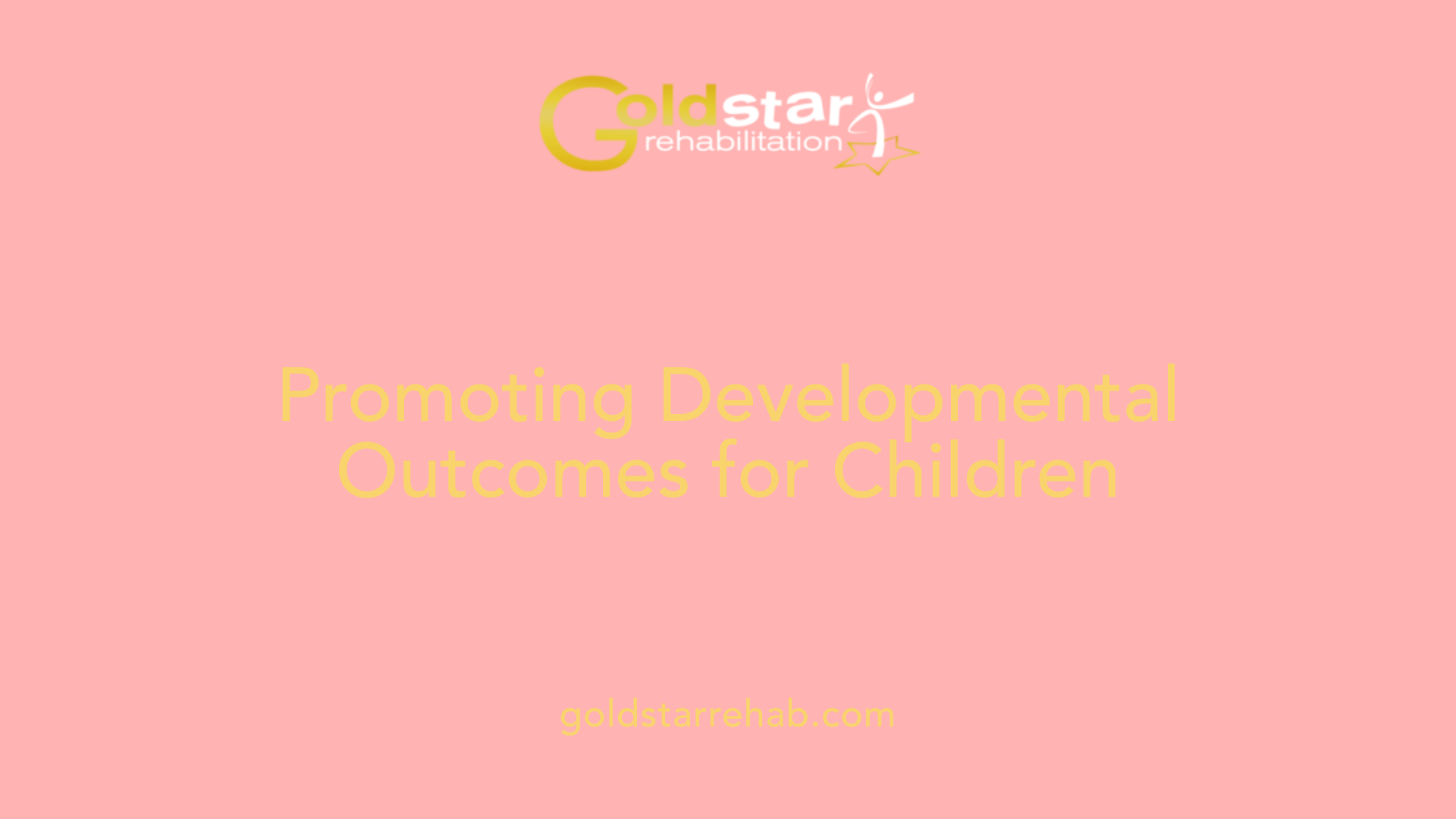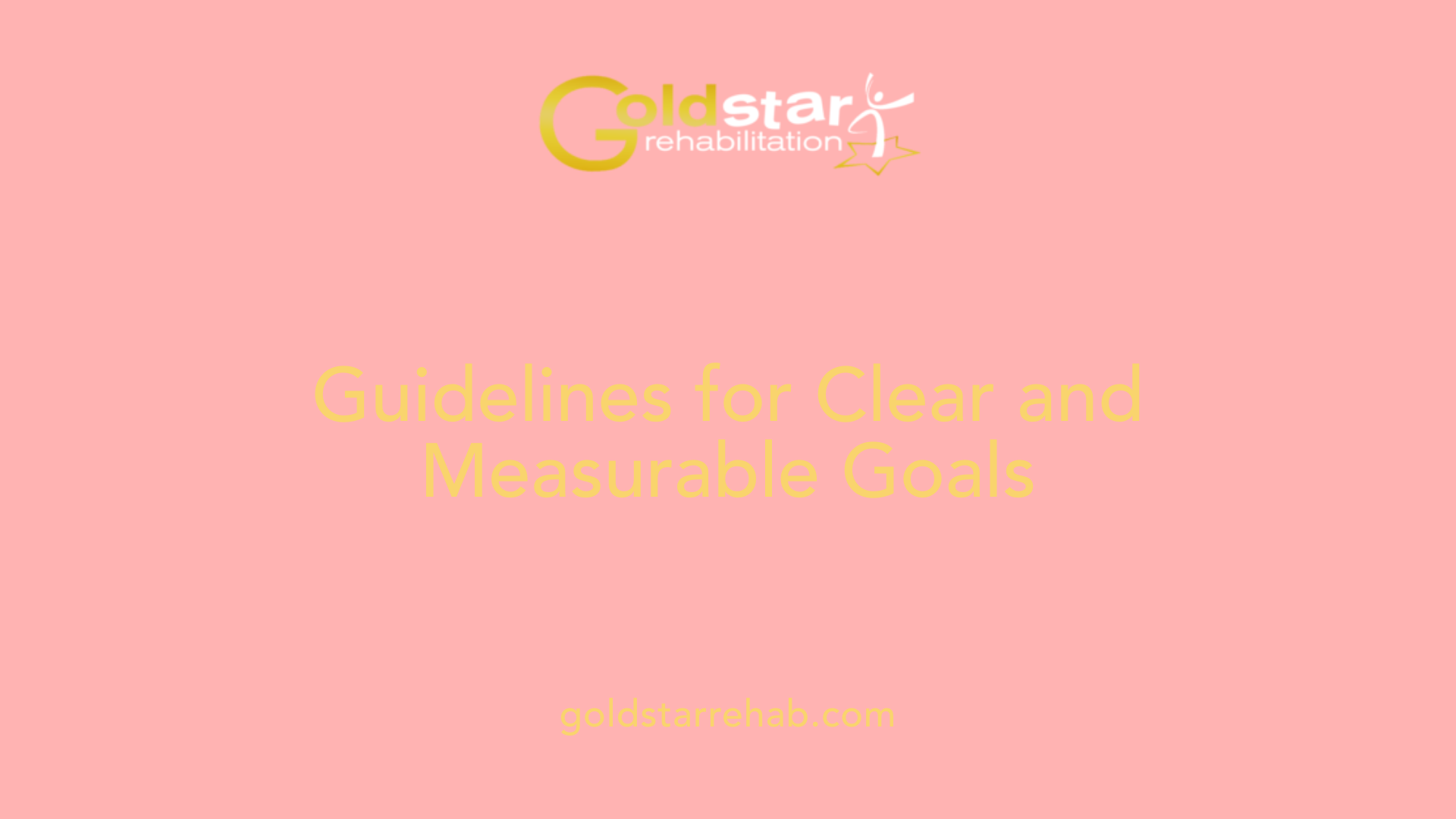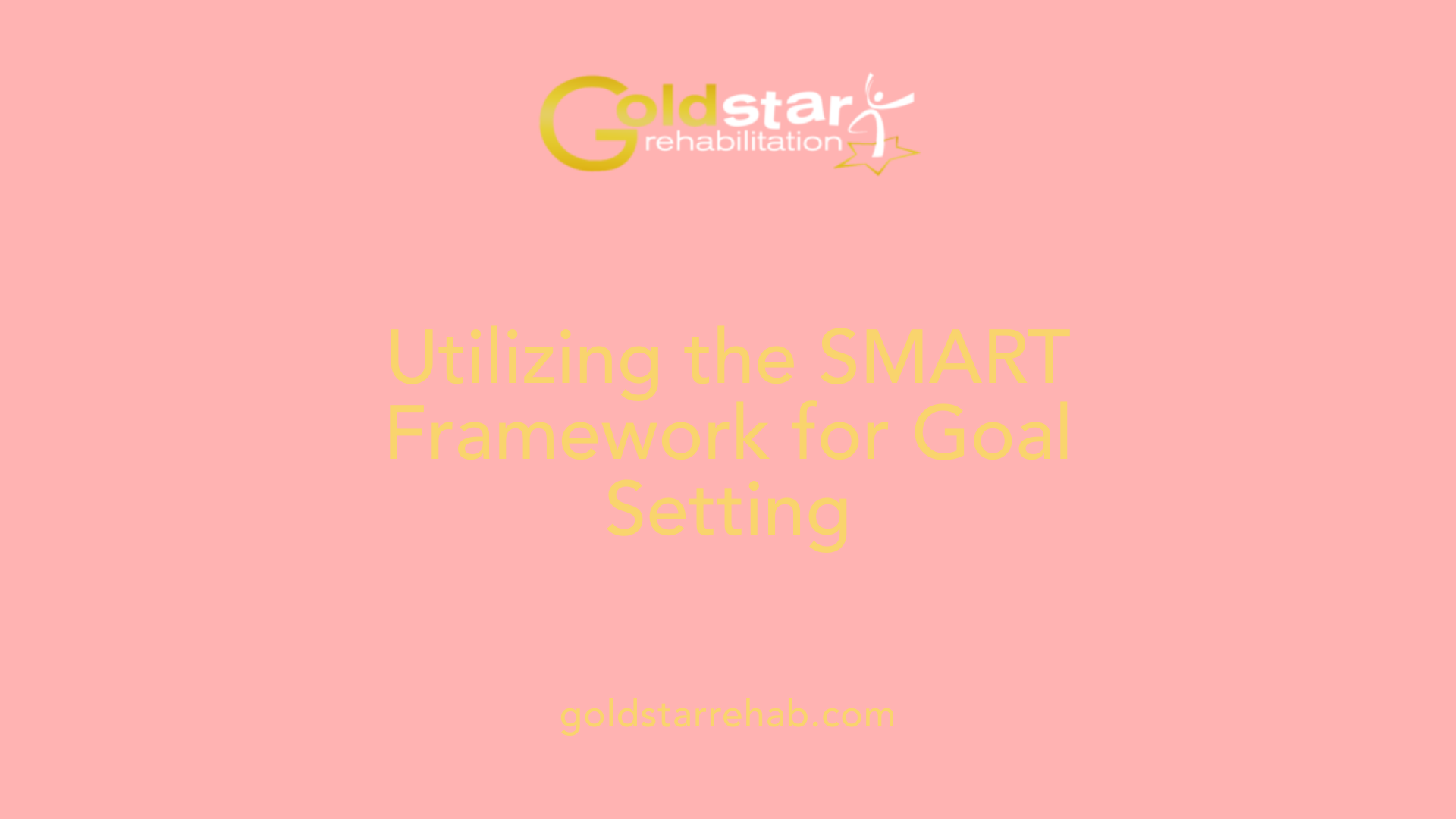How to Establish Clear Goals in Early Intervention Programs
Setting the Foundation for Successful Early Intervention
Table of Contents
Understanding the Critical Role of Goal Setting in Early Intervention
Establishing clear and effective goals is fundamental to the success of early intervention programs. These goals serve as guiding stars that align efforts, measure progress, and ensure that interventions are tailored to each child's unique needs. Drawing from evidence-based practices and collaborative frameworks, this article explores how practitioners can systematically create meaningful goals that foster positive developmental outcomes for young children and their families.
The Purpose and Scope of Goals in Early Intervention

What are the goals of early intervention?
The goals of early intervention are designed to identify and support children who are at risk of experiencing developmental delays or adverse outcomes later in life. The primary aim is to intervene early, before issues become more difficult to address, promoting healthier development across multiple domains.
Efficient goals focus on fostering progress in physical, cognitive, behavioral, social, and emotional areas. They are tailored to meet each child's unique needs, involving both the child and family to create meaningful and achievable outcomes.
When well-structured, these goals contribute to long-term benefits such as improved mental health, better educational achievement, and enhanced social skills. They help reduce risks associated with developmental challenges, ensuring children have the resources and support necessary to thrive.
By emphasizing early support, these goals also aim to build resilience within families and communities. This proactive approach helps prevent more significant problems later by addressing concerns promptly.
Ultimately, effective early intervention goals are focused on creating a positive trajectory for children. They support ongoing development and equip children with the skills needed for lifelong success—mentally, socially, and emotionally.
How to Develop and Write Effective Goals

How can I set effective intervention goals?
Creating successful intervention goals relies on a strategic process that emphasizes clarity, measurability, and relevance. A fundamental step involves establishing SMART objectives—goals that are Specific, Measurable, Achievable, Relevant, and Time-bound. These criteria help ensure that goals are not vague but instead provide a clear path for progress and evaluation.
Initial development begins with gathering comprehensive baseline data. This data is obtained through assessments, observations, and interviews with families and caregivers. This information is crucial in identifying the child's specific needs and strengths, serving as a foundation for personalized goal setting.
Once baseline data is collected, goals should be crafted using observable, clear, and measurable verbs. This approach allows educators and therapists to track progress effectively. For speech and language goals, it is important to include three core components:
For example, a speech goal might specify that the child will "follow a one-step direction involving familiar objects (DO) in a structured therapy session (CONDITION) with 90% accuracy across three consecutive sessions (CRITERION)."
Goals should also promote consistency and generalization by including measures that demonstrate the skill's endurance across different environments and throughout multiple sessions. This ensures that learned skills are meaningful and applicable in daily routines.
Effective goal setting is a collaborative process, involving input from families and interdisciplinary team members. This partnership helps align goals with family priorities and everyday activities, fostering engagement and relevance.
Utilizing frameworks like the SMART model and integrating evidence-based practices helps create realistic, focused objectives. Continual review and adjustment based on ongoing data collection are important to respond to the child's evolving needs.
In summary, well-crafted intervention goals are specific, measurable, and tailored. They are rooted in assessment data, clearly written with observable actions, and designed to promote consistent, meaningful skill development.
StepFocus AreaDetailPurpose1Baseline DataUse assessments, observations, and interviewsIdentify needs and strengths2Goal FrameworkApply SMART criteriaEnsure clarity and focus3Verbal ComponentsInclude DO, CONDITION, CRITERIONEnhance specificity and measurability4Consistency & GeneralizationMeasure across sessions/environmentsSupport real-world application5Family & Team InputCollaborate with caregivers and professionalsAlign goals with daily routines
By following these guidelines, professionals can develop effective, actionable goals that promote meaningful progress for children in early intervention programs.
Using Frameworks to Ensure Goal Clarity and Measurability

What method can be used to set clear and measurable goals?
A highly effective approach to establishing precise and attainable goals is the SMART framework. This method guides practitioners in formulating goals that are Specific, Measurable, Achievable, Relevant, and Time-bound.
In practice, each goal built on the SMART model clearly defines the expected outcome, which helps everyone involved understand exactly what needs to be accomplished. For example, instead of vague objectives, a goal like "child will follow a 1-step direction" specifies observable behavior.
Measurability is incorporated by setting concrete criteria, such as achieving the behavior with 80% accuracy across three sessions. This ensures progress can be tracked objectively.
Goals should also include specific conditions or settings, like during play with familiar objects, and performance standards, such as "responding correctly to safety commands 9 out of 10 times." This detailed structure supports accountability and focused intervention.
In speech and language goals, this approach translates into detailing the Do (the behavior or skill), the Condition (the context or setting), and the Criterion (the measurable standard). For instance, a goal might state: "Child will identify body parts when asked (Do) during structured play (Condition) with 90% accuracy over three consecutive sessions (Criterion)."
Including measurable and observable verbs like "identify," "follow," or "respond" helps clarify expectations and provides clear benchmarks. This enhances the ability to assess whether the goal has been achieved and promotes consistency in intervention.
Overall, utilizing the SMART framework and detailed goal components leads to more effective, transparent planning. It ensures that goals are not only well-defined and credible but also oriented toward meaningful progress in children’s development.
Establishing and Maintaining Clear Goals Throughout Intervention
How do I establish clear goals in early intervention programs?
Developing transparent and effective goals is a cornerstone of successful early intervention. The process begins with comprehensive assessments—using observations, interviews, and standardized evaluations—to identify the child's developmental needs and the family's priorities.
Once needs are identified, multidisciplinary teams collaborate to craft goals that are specific and meaningful. Using the SMART framework—setting goals that are Specific, Measurable, Achievable, Relevant, and Time-bound—helps ensure these objectives are clear and realistic.
For example, a goal might be to improve the child's ability to follow a one-step command during play within six weeks, measured by successful response in 80% of trials across three consecutive sessions. This structure offers clarity on what is expected, under what conditions, and how success will be evaluated.
Creating detailed intervention plans that include roles, resources, and timelines supports systematic progress. These plans should be flexible enough to adapt to the child's evolving needs.
Regular collaboration among team members allows for the adjustment of goals to match developmental progress. Continuous communication ensures that all stakeholders stay aligned and focused on shared outcomes.
In summary, establishing clear goals starts with thorough assessment, involves family and team input, and employs precise, measurable criteria. This approach promotes targeted intervention and supports ongoing progress toward meaningful developmental milestones.
Collaborative and Family-Centered Goal Setting
Why is it important to work with families, team members, and community resources when setting goals?
Effective early intervention relies on creating detailed, clear, and measurable goals within Individualized Family Service Plans (IFSPs) and Individualized Education Programs (IEPs). Achieving this requires a collaborative approach involving families, multidisciplinary teams, and community resources.
Involving families in the goal-setting process makes objectives more meaningful and culturally relevant. Families bring unique insights about their routines, priorities, and values, ensuring that goals serve their child's real-life context. Multidisciplinary teams, including speech therapists, occupational therapists, and educators, contribute their expertise, providing a comprehensive understanding of the child's needs.
Community resources further support consistency and continuity across settings. Regular team meetings, shared assessment tools, and open communication channels help align efforts, avoid conflicting priorities, and foster a shared understanding.
This collaboration leads to high-quality, achievable goals that are more likely to be followed through. Greater family involvement also boosts commitment and adherence, increasing the chances of positive outcomes for the child.
How do family routines and cultural values influence goal setting?
Goals should reflect the daily activities, routines, and cultural practices of the family. When goals align with what families see as important, they are more motivated to work towards them.
Incorporating family routines ensures that interventions are practical and relevant. For example, a goal related to requesting help during mealtime or participating in religious or cultural celebrations emphasizes skills that matter most to the family. Respecting cultural values also fosters trust and cooperation, making intervention efforts more effective.
Why is shared decision-making essential?
Shared decision-making involves families and professionals working together to set priorities. This collaborative process promotes a sense of ownership and responsibility.
When families actively participate, they are more likely to understand, accept, and implement strategies at home. It also helps professionals tailor objectives to the child's and family's specific circumstances, ensuring that goals are realistic and attainable.
How does engagement in goal-setting influence outcomes?
Engaging families and other stakeholders from the start encourages buy-in and increases adherence to intervention plans. When families see their input valued, they are more committed to participating regularly and supporting their child's progress.
This cooperative approach fosters a positive, empowering environment that sustains long-term development. Ultimately, shared and family-centered goal setting is central to successful early intervention programs, promoting lasting outcomes that are grounded in the child's and family’s unique context.
Building Sustainable Success in Early Intervention
Establishing clear, measurable, and individualized goals is the cornerstone of effective early intervention. By employing frameworks like SMART, engaging families and interdisciplinary teams, and continuously reviewing progress, practitioners can craft objectives that are both meaningful and achievable. Such strategic goal setting ensures that interventions are targeted, efficient, and responsive to each child's evolving needs, ultimately supporting better developmental outcomes. As programs grow and adapt, maintaining a focus on shared understanding and collaboration remains vital to fostering lifelong success for children and their families.
.png)








%20(1).jpg)




.jpg)





.jpg)

.jpg)











